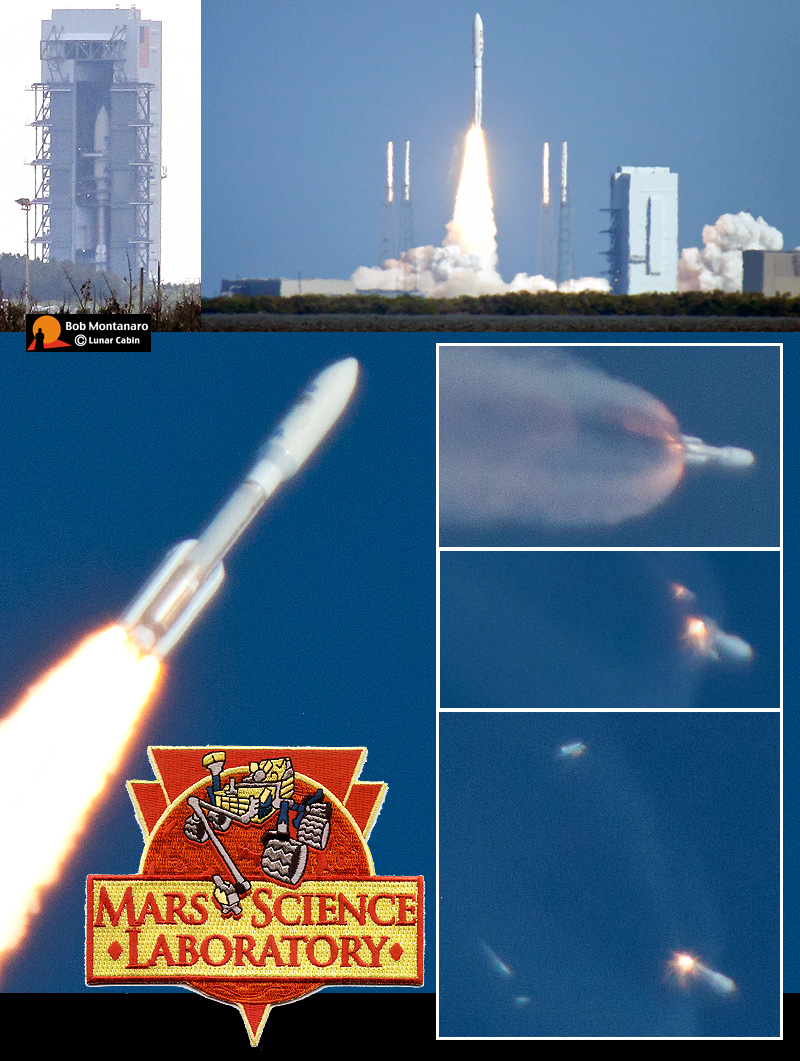 |
|
 |
|
The plutonium-powered Mars Science Laboratory, nicknamed "Curiosity", lifts off for the planet Mars aboard an Atlas V rocket from Cape Canaveral Air Force Station at 10:02 a.m. on 26 November 2011. The images include a view of the vehicle still in the gantry in the days leading up to launch, along with the liftoff and solid rocket booster jettison. An added bonus is the MSL patch obtained from the Air Force Space and Missile History Center at CCAFS. Excerpts from the MSL Fact Sheet explain a little about the mission: NASA's Mars Science Laboratory mission is preparing to set down a large, mobile laboratory, the rover Curiosity, using precision landing technology that makes many of Mars' most intriguing regions viable destinations for the first time. During the 23 months after landing, Curiosity will analyze dozens of samples drilled from rocks or scooped from the ground as it explores with greater range than any previous Mars rover. Curiosity will carry the most advanced payload of scientific gear ever used on Mars' surface, a payload more than 10 times as massive as those of earlier Mars rovers. Its assignment: Investigate whether conditions have been favorable for microbial life and for preserving clues in the rocks about possible past life. Mission Overview Plans for the Mars Science Laboratory call for launch from Cape Canaveral Air Force Station, Florida, between Nov. 25 and Dec.18, 2011, and arrival at Mars in August 2012. The spacecraft has been designed to steer itself during descent through Mars' atmosphere with a series of S-curve maneuvers similar to those used by astronauts piloting NASA space shuttles. During the three minutes before touchdown, the spacecraft slows its descent with a parachute, then uses retro rockets mounted around the rim of an upper stage. In the final seconds, the upper stage acts as a sky crane, lowering the upright rover on a tether to the surface. Curiosity is about twice as long (about 3 meters or 10 feet) and five times as heavy as NASA's twin Mars Exploration Rovers, Spirit and Opportunity, launched in 2003. It inherited many design elements from them, including six-wheel drive, a rocker-bogie suspension system and cameras mounted on a mast to help the mission's team on Earth select exploration targets and driving routes. Unlike earlier rovers, Curiosity carries equipment to gather samples of rocks and soil, process them and distribute them to onboard test chambers inside analytical instruments. |
|
All contents copyright Lunar Cabin |
|